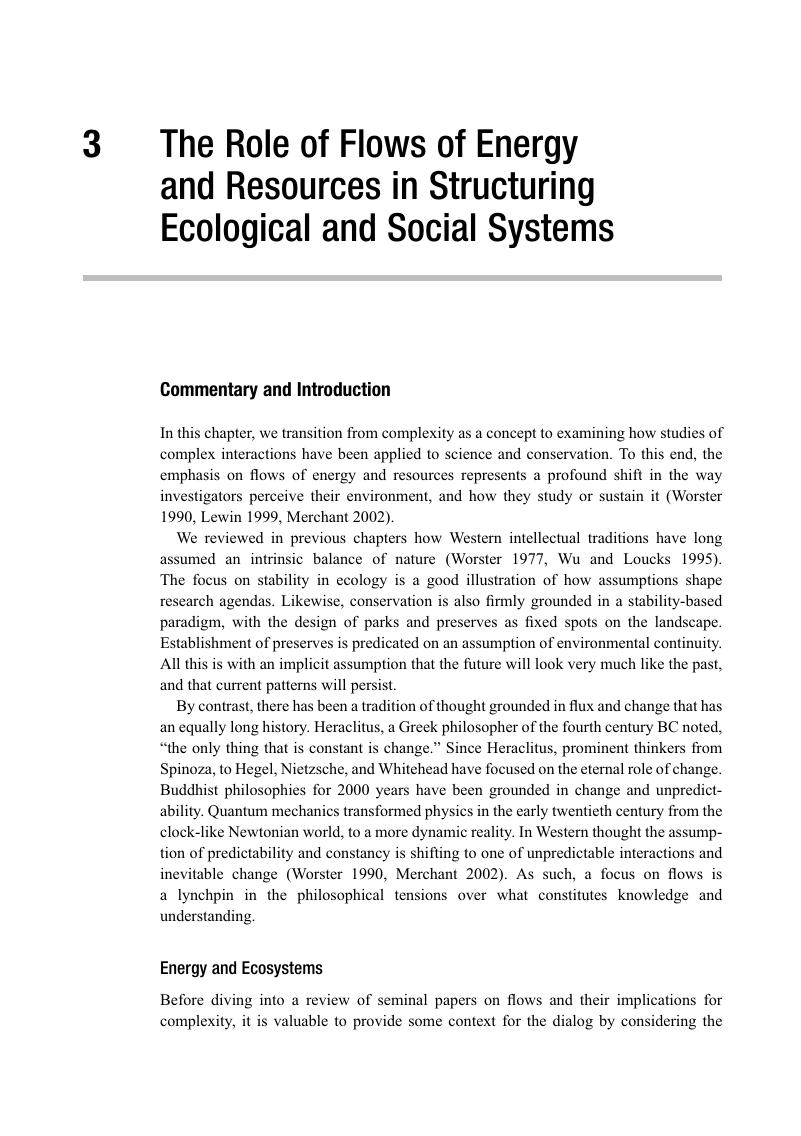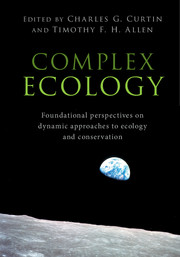Book contents
- Complex Ecology
- Complex Ecology
- Copyright page
- Dedication
- Contents
- Contributors
- Foreword
- Acknowledgements
- Introduction
- 1 Aggregation in Complex Systems
- 2 Diversity in Ecology and Conservation
- 3 The Role of Flows of Energy and Resources in Structuring Ecological and Social Systems
- 4 Non-linearity in Natural, Physical and Social Systems
- 5 Applied Implications and Subversive Science
- Epilogue
- Index
- References
3 - The Role of Flows of Energy and Resources in Structuring Ecological and Social Systems
Published online by Cambridge University Press: 16 May 2018
- Complex Ecology
- Complex Ecology
- Copyright page
- Dedication
- Contents
- Contributors
- Foreword
- Acknowledgements
- Introduction
- 1 Aggregation in Complex Systems
- 2 Diversity in Ecology and Conservation
- 3 The Role of Flows of Energy and Resources in Structuring Ecological and Social Systems
- 4 Non-linearity in Natural, Physical and Social Systems
- 5 Applied Implications and Subversive Science
- Epilogue
- Index
- References
Summary

- Type
- Chapter
- Information
- Complex EcologyFoundational Perspectives on Dynamic Approaches to Ecology and Conservation, pp. 220 - 282Publisher: Cambridge University PressPrint publication year: 2018



